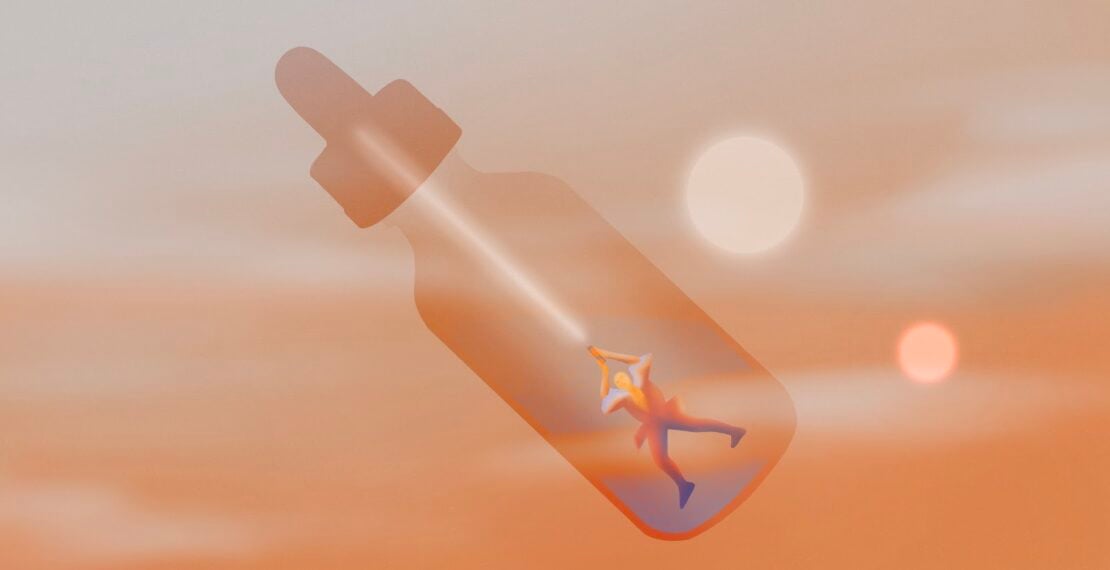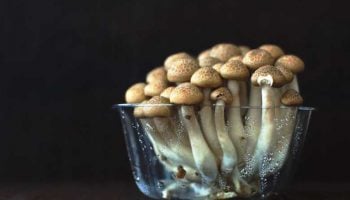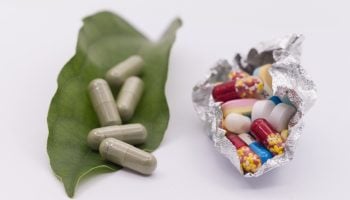Working with psychedelics is not as straightforward as we’ve been led to believe.
Instead of viewing psychedelics through the lens of a temporary substance intervention, what if we viewed intentional psychedelic use as a skill? One that has the potential to be an important meta-skill, heightening our capacity to direct the mind whichever way we wish, to manifest any intention we’re so bold to dream.
Just like the Jedi Knights learned to wield the power of the Force, you can learn to wield the power of Source through intentional psychedelic use. And the easiest way to start? Microdosing.
But before we go there, let’s take a step back and review clinical research on macrodosing.
Curing the Root Cause
When psychedelic medicine came back onto the cultural scene five years ago, the impact of a single psychedelic session on mental health blew away previous treatment models in terms of efficacy.
Early research from institutions like Johns Hopkins and NYU proved that a single psilocybin experience led to dramatic changes in well-being, providing substantial relief for many participants from previously intractable mental health conditions like depression, and showing great promise for treating alcoholism and smoking addiction. Because of these incredible results, psychedelics were (and continue to be) hailed as one of the premier substance-based interventions to replace conventional psychiatric medications.
Mental healthcare over the past 50 years has focused on a band-aid style of treatment. Instead of addressing the core cause of mental health issues—often, early childhood trauma—psychiatric interventions focus on manipulating neuro-transmitters to provide relief to the patient.
Essentially, if struggling with depression, anxiety, or some other “condition”, the patient was prescribed an antidepressant like Prozac to manage the “condition”. Then, because of the addictive nature of conventional psychiatric medications, this same patient usually ended up taking antidepressants for an indefinite period.
In other words, antidepressants addressed the symptom—low mood, not feeling happy, no motivation—but did not address the core issue of underlying trauma, rooted in the subconscious or unconscious self.
For the mental health paradigm, psychedelics promise to transform this model by “curing” the disease’s root cause, healing the unloved parts of ourselves, and alchemizing the shadow into wholeness.
And this is where microdosing comes into play.

Microdosing as an Invaluable Meta-Skill
As a critical mass of people become aware of untreated and unrecognized trauma, how can microdosing help cultivate greater resilience, adaptability, and efficacy in a time of extreme uncertainty?
We start by considering microdosing as an invaluable higher order skill, empowering the development of specific skills like writing, playing the violin, and mastering martial arts.
Recent clinical research proves that microdosing LSD increases brain-derived neurotrophic factor (BDNF). Basically, the more BDNF produced by the body, the greater capacity for neuroplasticity; the greater capacity for neuroplasticity, the easier it is to integrate new behavioral change.
You are your own guru. Everything you need to learn and grow and heal is already within you, and intentional psychedelic use merely peels back the distracting and inauthentic layers of self that prevent you from tapping into your inner intuition and guidance.
In peeling back these layers of self, you create space for emotions, insights, and perspectives to rise to the surface for processing. These insights often dig up past events and experiences that have become stuck in our unconscious and subconscious, presenting the opportunity to process these events and free ourselves from their bonds.
In developing the skill of psychedelic use, you simultaneously develop the skill of directing the mind with intention and purpose. When one learns how to direct the mind with incredible precision, then almost anything becomes possible.
Breaking Down Psychedelic Use as a Skill
So, how do you cultivate the skill of psychedelic use? There are three elements to consider when approaching psychedelic use as a skill: timing, intensity, and the type of medicine.
Timing
Every six months or so, we make an appointment with the dentist to get a deep hygienic clean. In between appointments, we brush, floss, and generally take care of our teeth before the next appointment comes around.
Intentional psychedelic use has a similar trajectory.
Every so often, we dive into the deep end of our consciousness, eating five grams of mushrooms and plunging inwards, cleaning out the detritus and poison of traumatic experiences stored in our subconscious and unconscious minds.
By creating this sense of spaciousness, we connect with ourselves, nourishing our sense of being, thereby contributing to more balance and peace. To keep our soul “clean”, we adopt practices like meditation, breathwork, and microdosing as part of our integration practice.
So, when it comes to timing, consider how often you generate insight and awareness through higher doses (less often) and how often you integrate sub-perceptual doses (more often) and contemplative practices (most often).

Intensity
What’s the difference between a microdose, mini-dose, and museum dose? What about a museum dose and a moderate dose? Or even a mega-dose?
When it comes to working with psychedelics, we can titrate the specific amount we wish to take based on our intention for the experience.
Are you interested in more flow for your workday? Ten to 15 micrograms of LSD may be best.
What about a brainstorming session with your business partner in the redwoods? Consider imbibing 40-50 micrograms on your hikrodose.
Looking to peel back your entire onion of self, exposing your innermost truths to a trusted friend and sitter by diving into worlds you never dreamed possible? Three hundred micrograms of LSD may be just the trick.
By titrating up and down based on your intention, you can approach any psychedelic day with incredible precision.
Medicine
Do you want to heal early-childhood trauma? MDMA-assisted psychotherapy can be a good starting point.
What about unfurling your unconscious and healing generational trauma from your ancestors? Psilocybin or LSD could be good bets.
Maybe you’re interested in opening up your crown chakra and becoming one with divinity? Then synthetic 5-MeO-DMT may be the right touch.
Different medicines create different experiences and, depending on the intention you wish to manifest, it’s wise to choose your specific medicine with the outcome in mind.
The Final Step
Once we understand the “first principles” of psychedelic use, the next step in personal mastery is to start our journey by combining microdosing with long-established practices like yoga, breathwork, and meditation, as well as more modern practices like psychotherapy, cognitive behavior therapy (CBT), and float tanks.
Continuing to develop the skill of microdosing requires striking a balance between teaching yourself and integrating the help and guidance of ‘mind-masters’ who have walked the path before you.
Just like Luke Skywalker learned to wield the Force through his lightsaber, you too can learn how to direct the power of your mind with the help of microdosing psychedelics.
If you’re ready to start your Jedi microdosing training, sign up for our Microdosing Course and you’ll get step-by-step direction on how to tailor your protocol to your body and goals, and connect with experienced “microdosing masters” in our global online community.






Hi,
I have Stage 4 Glioblastoma of the Brain. It’s a fatal DX and I’m beyond devestated and scared. My uncle suggested I try this. I’m currently taking oral chemo called Temodar 5/28, meaning I take for 5 days and off for 28. Will kindly help me please?
Best, Jill Calvert a very scared newly retired RN.
Hi,
I have Stage 4 Glioblastoma of the Brain. It’s a fatal DX and I’m beyond devestated and scared. My uncle suggested I try this. I’m currently taking oral chemo called Temodar 5/28, meaning I take for 5 days and off for 28. Will kindly help me please?
Best, Jill